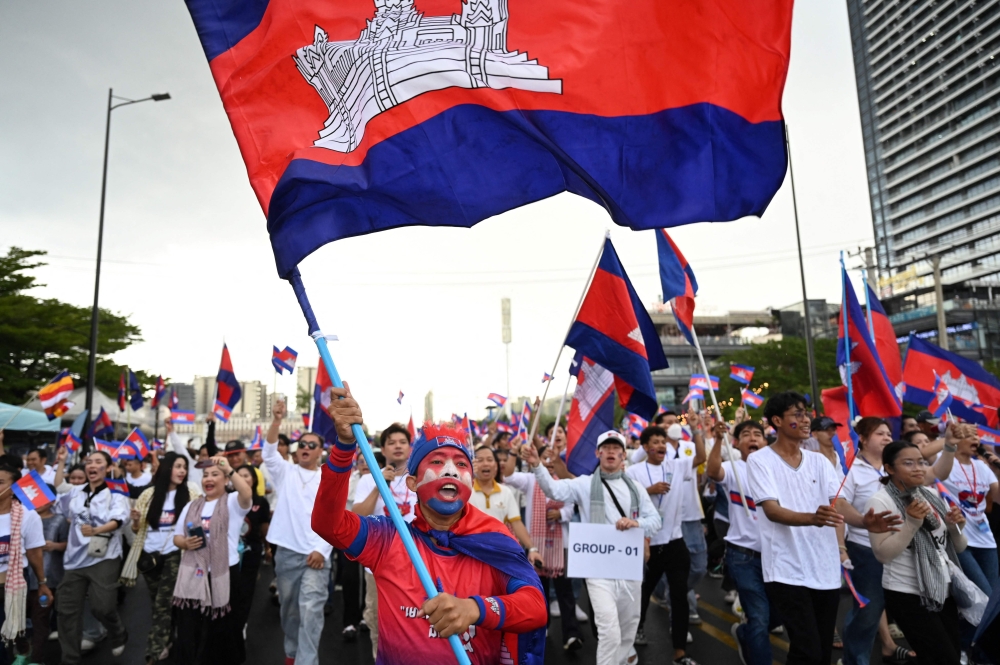AUGUST 4 — The borderlands between Thailand and Cambodia are once again teetering on the edge of conflict.
What had appeared to be a tentative peace is now hanging by a thread. In an official statement released by the Cambodian Ministry of National Defence on August 3, 2025, Phnom Penh alleged that the Thai military, in collaboration with its own authorities, had instructed the evacuation of remaining Thai civilians in the border area of Surin Province, effective by the night of the same day. This abrupt move, reportedly confirmed at 10.49am, sets off alarm bells across Asean.
More troubling is Cambodia’s accusation that Thai armed forces are preparing to launch a series of attacks on multiple sacred and symbolically sensitive sites — Tamone Thom Temple, Ta Krabey Temple, and Preah Vihear Temple — stretching to the Anseh area.
The timing is perilously close to the Extraordinary Meeting of the General Border Committee (GBC), scheduled for August 7 in Kuala Lumpur.
If true, these reported plans of a preemptive military offensive not only raise serious questions about Thailand’s strategic calculus but also threaten to derail the fragile peace painstakingly forged just days earlier.

People wave National flags as they take part in a Peace March in Phnom Penh, following border conflict with Thailand, on August 2, 2025. — AFP pic
At the heart of this intensifying crisis lies the July 28 ceasefire agreement, signed under the auspices of Malaysia and witnessed by the United States and China.
The accord, hailed at the time as a breakthrough, marked the first genuine attempt by both sides to put in place a joint monitoring mechanism to contain escalating hostilities. Yet, within less than a week, allegations of sabotage and premeditated violations have emerged.
From Phnom Penh’s perspective, the Thai military’s reported actions would constitute a gross breach of Cambodia’s territorial sovereignty.
Such a move would not only undercut the spirit and letter of the ceasefire agreement but also reveal the structural weaknesses in Asean’s conflict prevention mechanisms.
While Malaysia, as Asean Chair, has played a vital role in mediating both sides, the pressures now bearing down on the ceasefire show how easily regional diplomacy can be overtaken by unilateral military ambition.
The Cambodian Defence Ministry’s appeal to the international community is therefore not just a diplomatic ritual — it is a cry for immediate intervention.
Cambodia has urged global actors, particularly those who stood witness to the July 28 agreement, to prevent the unfolding of another cross-border war. What makes this scenario more combustible is the combination of military evacuation orders, targeted temple zones, and overlapping historical grievances that have long haunted Thai-Cambodian relations.
The stakes are high. If the reported Thai offensive proceeds, not only would it risk full-scale retaliation by Cambodian forces, but it would also plunge Asean into a regional security crisis with broader geopolitical ramifications.
The temples in question are not just ancient monuments; they are powerful symbols of national identity, sovereignty, and contested memory.
A single miscalculation in such highly charged terrain could ignite a wider regional fallout, drawing in external powers and disrupting vital economic corridors in mainland South-east Asia.
What remains unclear is whether the Thai civilian leadership in Bangkok has sanctioned these alleged military movements or whether the Thai military is acting autonomously, as it has often done in the past.
If it is the latter, then the political establishment in Thailand must take swift steps to reassert control, lest it be perceived as complicit in undermining a ceasefire that had already brought some relief to more than 160,000 displaced civilians on both sides of the border.
For Asean, this is a litmus test. The fragility of the
Thai-Cambodian ceasefire is not merely a bilateral issue — it is a regional emergency that touches on the credibility of the Asean Charter, the effectiveness of the Asean Regional Forum (ARF), and the sincerity of member states in abiding by regional norms.
The General Border Committee meeting on August 7 must not become a post-mortem for another failed peace.
It must be the forum where both parties are held accountable for any escalation and are pressed — firmly and publicly — to recommit to the ceasefire under international scrutiny.
For now, the world watches anxiously. The ceasefire still stands — barely.
But unless cooler heads prevail and immediate de-escalation measures are adopted, the region risks sliding once more into a conflict that no one — least of all the civilians caught in the crosshairs—can afford.
* Phar Kim Beng PhD is Professor of Asean Studies, International Islamic University of Malaysia and Director of Institute of Internationalisation and Asean Studies (IINTAS).
** This is the personal opinion of the writer or publication and does not necessarily represent the views of Malay Mail.






